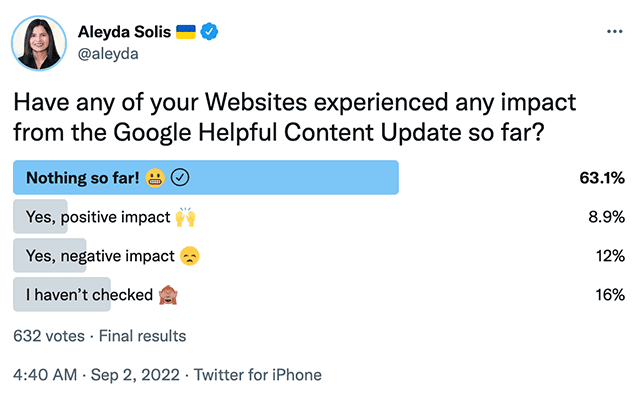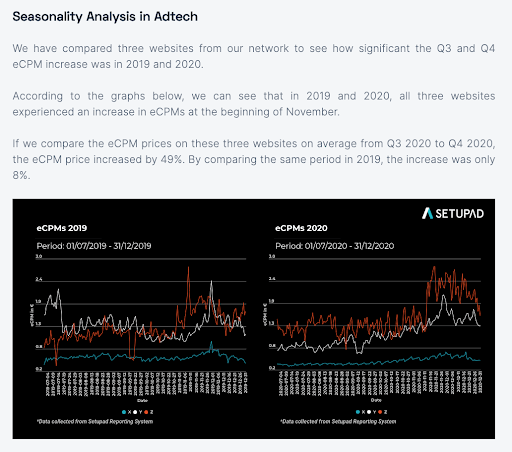3571
•
14-minute read


The world of content creation and digital marketing is ever-evolving. Businesses, marketers, and content creators are all searching for a way to make their content rank and stand out. To meet this demand, Google recently released its Helpful Content Update, which is designed to help content creators write more helpful content.
The update officially finished rolling out on September 9, 2022. It took 15 days to complete, and webmasters now have enough data on their hands to fully assess the effect of the update.
Google also rolled another iteration of the Helpful Content Update for non-English languages on December 5, 2022. Since the article was written in early December, it primarily focuses on September's version of the update.
In this blog post, we'll discuss what the Helpful Content Update is, how it works, and its benefits. We'll also provide tips and strategies for optimizing content for the Helpful Content Update.
The new Google's Helpful Content Update aimed to form a sitewide signal specifically targeting content that has been written for search engines as opposed to people. In other words, the update aims to better reward genuinely satisfying and helpful content and devalue content that doesn't meet users' expectations.
In many ways, this update is part of Google's broadscale effort to make high-quality content rewarded and easily accessible.
The update works by using machine learning algorithms to analyze the content of a webpage and determine whether it is helpful and informative for users. Google looks at various factors to determine whether a webpage is helpful, including the quality of the writing, the structure and organization of the content, and the presence of helpful resources like images and videos.
If a webpage is determined to be helpful, it may rank higher in the search results for relevant queries. This can help users find the information they are looking for more quickly and easily and can also help website owners by driving more traffic to their sites.
Google's search algorithms are constantly evolving, and the helpful content update is just one of many factors that can influence the ranking of a webpage in search results. Google uses a wide range of signals to determine the relevance and quality of a webpage, and it is always working to improve the search experience for users.
However, industry leaders seem to all agree that the update didn't cause a huge shakeup like other Google updates, for example, Panda and Penguin.
A Twitter poll by Aleyda Solis showed that 9% of SEOs have seen a positive impact, and 12% have seen a negative impact. Nevertheless, it's important to take these findings with a grain of salt, as volatility doesn't always mean the site was hit by a major update change. Google makes daily changes to its algorithm, so any volatility can be attributed to a number of things.

Even Google's Danny Sullivan has confirmed that the update didn't cause a huge shakeup. However, it signals a more important direction in which Google is heading with ranking content.
If your site has been hit by HCU, you'll most probably notice it first by going into your analytics. However, if you fear that your content is susceptible to this update, the easiest way to determine that is by answering the following questions and evaluating the content you're creating across your site:
Based on this self-assessment, SEO professionals were quick to spot sites that were hit the most. These are sites with a lot of AI-generated content, like music lyrics, grammar, and database-driven websites. However, even in this field, the chatter wasn't as big as it was anticipated.
Once again, the update demonstrates that Google wants to put an end to sites that have shown abnormal or aggressive growth.
Usually, if you see a site like this, that's a clear indication that the content was clearly written for search engines and not humans.
Essentially, Google wants sites to demonstrate growth because the content they publish is in-depth, high-quality, and really helpful for your audience. It can't be a veil for driving traffic.
Google looks at a variety of factors when evaluating content for the Helpful Content Update. These factors include content length, content structure, formatting, navigation, and overall user experience.
Content creators should strive to create content that is easy to read and understand, as well as useful and helpful to their readers. They should also pay attention to formatting and navigation, which can impact the overall user experience.
This update becomes even more important when we look at the rise of AI content writers and specifically the chatbot that lately has revolutionized the whole industry – ChatGPT.
Although there is nothing wrong with these tools, and oftentimes AI content is still informative and well-written, it lacks the sufficient depth and perspective to make it high-quality and unique. With so much content being released online every day, it only makes sense why Google wants us to have tools in place to differentiate subpar content from quality content.
There are a few ways to identify thin or unhelpful content. One way is to look at the length of the content. If it is very short, it may not contain enough information to be useful. Consider sorting your content by low word count (you can use a website crawler tool like Screaming Frog or SEO PowerSuite to automate this process). Then, manually inspect pages and determine which ones don't serve users' purpose.
Another way is to consider the source of the content. It is more likely to be helpful if it comes from a reputable source. Additionally, you can assess the content by looking at how well it addresses the topic at hand. If it only touches on the surface of the topic without providing any in-depth analysis or explanation, it may be thin or unhelpful.
It is important to add original insight to your content because it helps to make your content unique and valuable. When you provide original insights, you are offering something that cannot be found elsewhere, which can make your content more interesting and informative to your readers. Additionally, original insights can help to position you as an expert in your field, as they demonstrate your knowledge and understanding of the topic.

Google's E-A-T (Expertise, Authoritativeness, Trustworthiness, plus another E that has been recently added for Experience) is a set of quality guidelines that aim to help Google understand the level of trustworthiness, expertise, and authority of a website or a specific piece of content. To optimize your content for E-A-T, you can follow these best practices:
Ensure you're following Google's Search Essentials (formerly Webmaster Guidelines and general guidance applicable to other major Google updates.
For example, your website should be mobile-friendly and well-optimized for Core Web Vitals. In addition, it should have both a strong on-page SEO (internal linking structure and clear navigation) and off-page SEO (strong backlink profile).
Search intent refers to the practice of creating and optimizing content to meet the needs and expectations of users who perform a search query on a search engine.
The first step to nailing the search intent is understanding what the user is looking for. Is the user looking for information, trying to purchase a product, or looking for a specific website?
Next, assess the content length of your organic competitors and identify the main topics and subtopics they're covering. If you want to outrank them, chances are you will need to create content of a similar length.
Finally, creating a positive user experience is key to satisfying search intent. This includes having a clear and easy-to-navigate website, fast page loading times, and mobile-friendliness. Use clear and consistent structure with header tags and subheadings, making your content easy to read.
Internal and external links can help provide additional context and information for users. These links can also help improve the credibility and authority of your content.
Google's Helpful Content Update is an important algorithm update that content creators should be aware of.
It's evident that this update is just a part of a larger Google strategy to reward content that is useful, relevant, and engaging. With the right strategies and best practices, content creators can utilize this update to their advantage and create more successful content.



